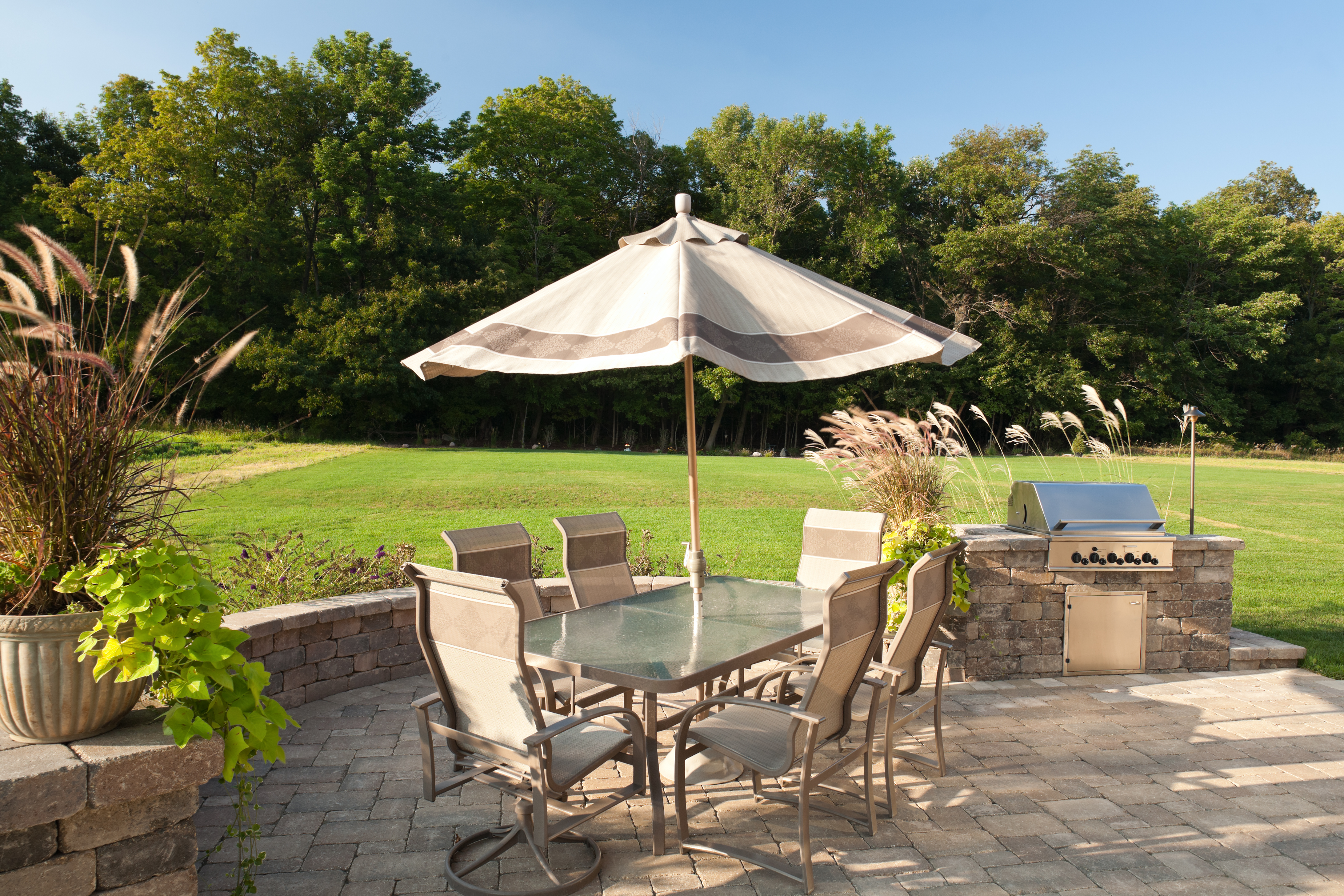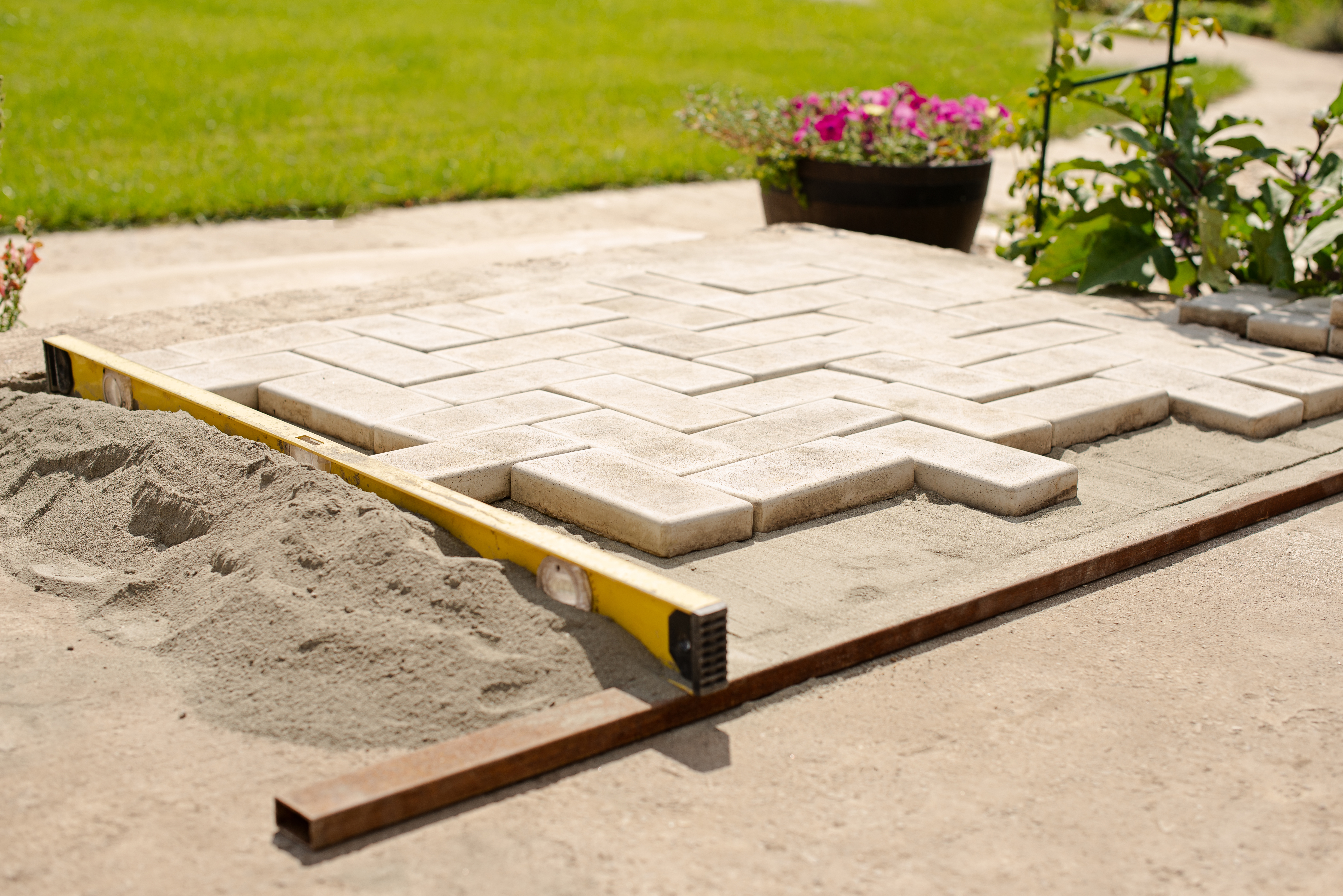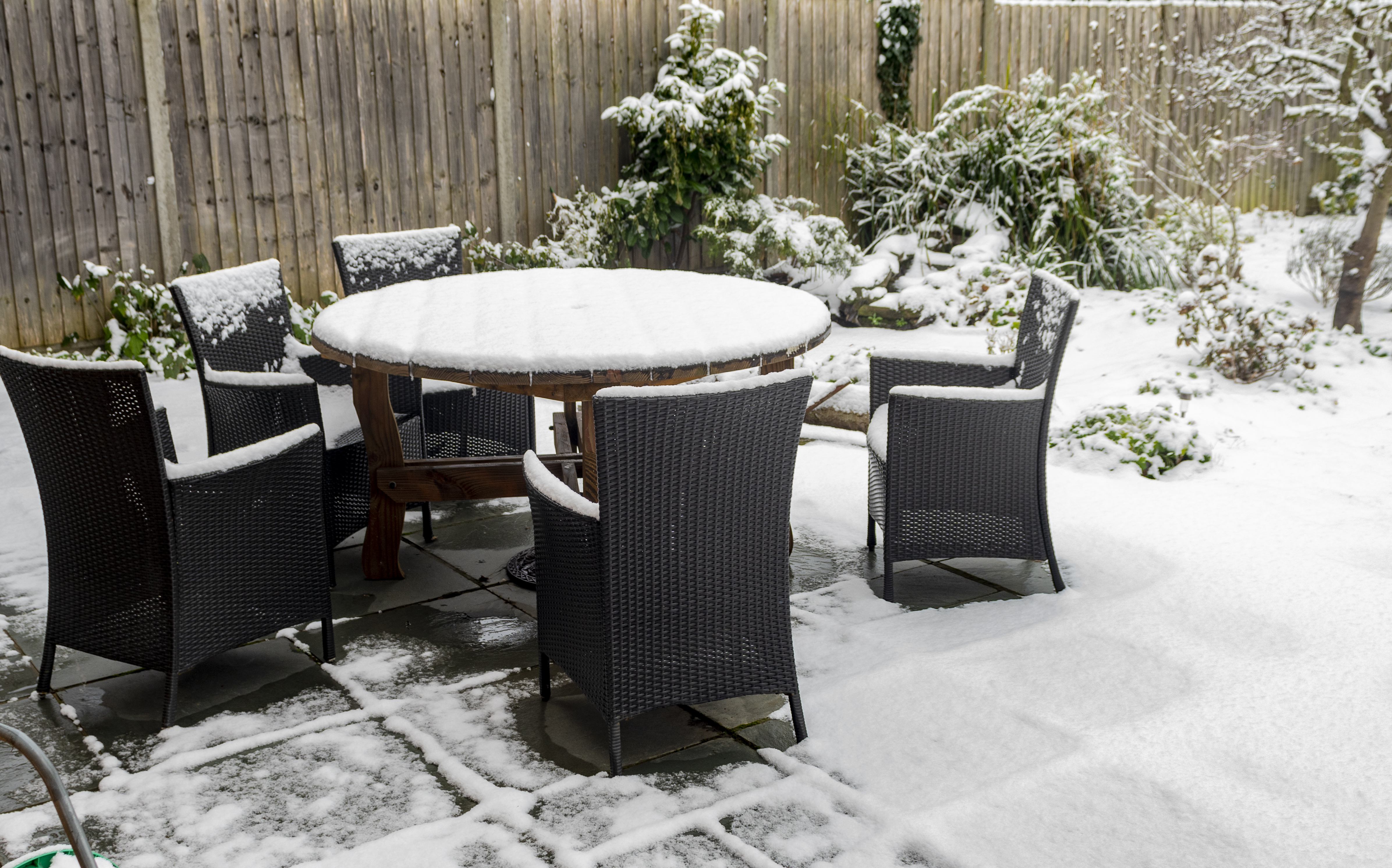
A porch can expand your living space and add curb appeal. Find out what to budget for the cost of a porch on your home with this guide.
What do you do when your patio sinks faster than your weekend plans?


Improperly prepared soil is a top culprit for patio sinking.
Poor drainage can wash away base materials, causing tilting.
Decaying tree roots and heavy loads can impact a patio’s stability.
Patios in areas with cold winters are at risk due to freezing and thawing.
Fixing many patio problems ranges from $730 to $2,500.
For many homeowners, their outdoor space is their happy place. So, of course, panic ensues when your patio starts to sink. From shifting soil to drainage disasters, understanding why the patio is sinking is the first step toward fixing your oasis. Here are the five most common reasons your patio is going under and how to bring it back up.
Poorly compacted soil beneath the surface is one of the most common culprits behind a sinking concrete patio. The ground beneath must be adequately compacted during installation to create a stable base. If this step is rushed or skipped, the soil can settle over time, dragging your patio down.
Depending on the extent of the issue, repairing your patio may cost $730 to $2,500. Working with a local deck repair specialist will help you find an ideal solution for your budget.
Mudjacking is a cost-effective way to lift and level a concrete patio by pumping a slurry mixture under the slab.
Polyurethane foam injection is a modern mudjacking alternative that uses high-density foam to lift the slab.
Rebuilding the base may be necessary for severe sinking.

Water collecting around or beneath your patio can erode the soil supporting it. Poor drainage slowly washes away the base, leaving your patio to sink or tilt toward the area with the worst erosion. To avoid these issues, it is essential to understand who installs concrete patios to ensure proper drainage.
Install a French or channel drain to divert water from the patio, protecting the base layer.
Grade the surrounding landscape to slope the yard away from the patio to prevent water pooling.
Consider replacing solid concrete slabs with patio pavers to boost water absorption and reduce erosion.
Tree roots beneath a patio can push up pavers or crack concrete slabs. But when those roots die and decompose, they leave behind voids that may eventually collapse, causing patio sections to sink.
In this instance, you may need to rebuild. Homeowners can expect the cost to build a patio to be around $4,000, but your final bill can vary quite a bit. Simple designs might run as low as $800, while larger patios with custom features or upscale materials can push the price north of $14,000. But first, any pro you hire will address the decay.
Remove old roots by excavating the affected area and removing dead or rotting roots.
Fill the void with compacted soil or gravel to restore stability.
Install a root barrier to redirect future root growth.
Over time, you may have added a hot tub, outdoor kitchen, or other hefty features to your patio. All of the extra weight could be too much for your existing base. Without reinforcement, a patio may slowly sink under the pressure.
Reinforce the base if your concrete patio is in good shape by pouring an extra layer of concrete.
Add support footings by cutting out patio sections and digging beneath the slab to install concrete piers.
Consult a structural engineer for severe sinking to address the situation and avoid issues later.

When moisture in the soil freezes, it expands, pushing your patio upward. Once the ice melts, the ground settles again, but not always evenly. Over time, this freeze-thaw cycle can leave your patio looking sunken, sloped, or uneven.
Improve drainage to steer water away from the patio to reduce freeze-thaw damage.
Use frost-proof materials like concrete pavers, which can often withstand cold-weather expansion better than a large concrete slab.
Consider deeper footings to ensure the patio base extends further below the frost line in your local area to prevent shifting.
Are your patio problems just cosmetic or something more serious? Here are the most common signs that your patio is sinking:
Uneven or sloping surfaces
Pooled water after rain
Cracks in slabs or pavers
Wobbly furniture due to an uneven surface
Trip hazards where pavers no longer align
Unless you are an experienced DIYer with a background in patio building, it is best to call in a pro for sinking issues. Professionals can pinpoint the root cause and recommend the most effective fix, helping you avoid costly DIY mistakes.
While DIY repairs might save money up front, an expert knows how to ensure your patio stays safe, level, and long-lasting. That's the best way to protect your investment in your outdoor space.
From average costs to expert advice, get all the answers you need to get your job done.

A porch can expand your living space and add curb appeal. Find out what to budget for the cost of a porch on your home with this guide.

Looking to build an outdoor entertainment space? Use this patio cost guide to get an idea of how much your exterior project will come out to.

Learn the cost of a metal awning for your home. Discover the essentials of installation, materials, and labor, and explore ways to save on your project.

Ready to upgrade your outdoor spaces? Turn your deck into a place you love to show off with these 15 rail design ideas.

Installing a new wooden deck? Explore this guide to learn about the best wood for decks, including the benefits, costs, and life expectancy of each type.

When you build a deck, you need to ensure it complies with local building codes. Here’s what you need to know about the most common deck building codes.